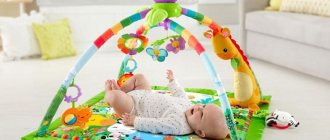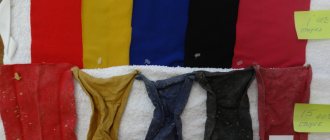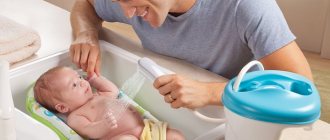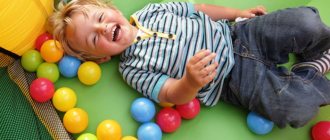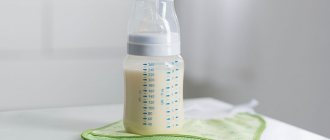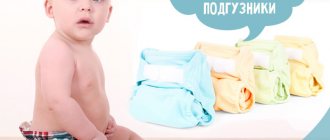During lactation, caring for the glands is important. This is especially true for mothers whose milk leaks. To absorb the secreted fluid, many women use special pads. They are indispensable during breastfeeding, as they perform several functions at once.
Breastfeeding pads are an indispensable hygiene product for nursing mothers with unsettled lactation.
What are gaskets for gw
These are soft pads, usually round in shape, that are attached to the inside of the bra. They are usually used in the first months after childbirth. During this period, the hormonal system adapts to the baby's needs. Therefore, a woman often experiences intense milk production. Functions of gaskets for guards:
- protect linen and clothes from wet spots;
- support local microflora;
- prevent the growth of bacteria;
- help heal cracked nipples.
They are sold in departments with goods for newborn children, pharmacies, and branded stores.
How to use breast pads?
A woman can use breast pads with any underwear - be it a regular bra or a special one for feeding. Having taken the product out of the pack or individual packaging, remove the protective strip from the adhesive layer and glue the liner inside the bra cup. It is important to position the pad so that its center is located opposite the nipple, since this area on the product is the softest and will not cause discomfort even with prolonged contact with delicate skin.
Gaskets must be changed at least every four hours. Even if it seems to you that the liner is not too wet, this frequency is dictated by hygiene and safety requirements. Otherwise, active proliferation of bacteria may begin in a nutritious and warm medium.
What are breast pads made of?
Manufacturers offer disposable and reusable accessories. Disposable liners consist of several layers. They are attached to the bra cup with an adhesive strip. Adhesive tape secures the accessory to the underwear. The outer layer is a thin film. It prevents liquid from saturating the bra cups. The inner part adjacent to the chest is usually made of non-woven material. The liquid absorbs the absorbent located between the layers.
Reusable breast pads are made from cotton, bamboo, polyester, microfiber, and silicone. Usually materials are combined in layers.
LillyPadz Chest Pads
Reusable ultra-thin breast pads made of medical, breathable silicone are made using special technology. They create the effect of a “second skin” and are firmly fixed on the chest, do not wear out, delicately and reliably protect against milk leakage, preventing it from accumulating inside the pad. The safety of the pads has been confirmed by clinical trials.
So, let's move on to the honest and incorruptible impressions of young and experienced mothers. Let's start with a more familiar and traditional product - disposable breast pads.
Disposable and reusable pads for breastfeeding
Each type of accessory has its own characteristics. The main difference is the service life. Reusable pads can be washed and reused. Disposable products are discarded after the first use.
Pros of reusable products:
- economical - with proper care, one package lasts a long time;
- Beautiful design;
- comfort;
- do not lose absorbent properties after washing;
- breathable materials;
- The inner surface eliminates skin irritation.
They also have disadvantages. Reusable products are difficult to find in supermarkets. Such pads are inconvenient to use in cases where milk leaks heavily, since they do not have a protective film. Products of questionable quality quickly lose their shape after washing.
Reusable pads for breastfeeding are budget-friendly, made of breathable materials and beautiful, but they cannot cope with a large amount of leaking milk.
Disposable hygiene products have a number of advantages. Compared to reusable products:
- they do not need to be washed, ironed, dried;
- reliability - most products have Velcro that is firmly fixed to the cups;
- the absorbent layer provides a dry surface, which reduces the likelihood of bacterial infection;
- Individual packaging prevents the entry of bacteria.
Pads for one-time use are convenient to take when visiting or traveling. One of the disadvantages is the high consumption. If you use hygiene products for several months, the costs will be noticeable on your budget. Some companies use chlorine, brighteners, and formaldehyde in the production of disposable products. These substances often cause an allergic reaction during breastfeeding. Poor quality accessories allow milk to pass through and do not fit well on the cup.
Review of gaskets: how to choose and which ones to choose
Hygienic products are selected based on the budget and the characteristics of the body. When choosing inserts for breastfeeding, pay attention to the following characteristics:
- Compound. For women with sensitive skin, hypoallergenic products made from natural materials are suitable.
- Individual packing. If it is, the product is protected from dust, moisture, and contamination.
- Adhesive layer width and shape. The volumetric strip prevents milk from leaking. It is convenient to use anatomically shaped products with wide Velcro. In this case, the gasket is firmly fixed and does not move to the side.
- Absorbent material. Absorbing properties depend on it. If milk leaks intensively, choose products with a superabsorbent - a polymer in the form of granules.
- Gasket thickness. For linen without cups, it is better to choose thin products. Under loose clothing, pads of any thickness are suitable.
- Absorbency. The manufacturer indicates it on the packaging in droplets: from 1 to 4.
- Environmental friendliness. The packaging must contain information that no harmful chemical compounds were used during the manufacturing process.
Let's consider the properties of lactation products from popular brands.
Johnson's Baby
The protective discs of this company are distinguished by a concave shape that follows the curve of the chest. Johnson's Baby pads (France) absorb liquid well and do not limit freedom of movement. This feature is important for women with abundant milk production. Products from this company can be worn under almost any clothing, with the exception of thin blouses. This problem can be solved if you use a bra with foam cups.
The product is made from non-woven viscose. Cellulose filler is used as an absorbent.
Disadvantages of the product:
- no individual packaging;
- narrow mount;
- The perforation is too dense to open the box.
Johnson's Baby breastfeeding pads have an anatomical shape and a good degree of absorption.
Avent
The manufacturer makes both disposable and reusable devices to protect against leakage of breast milk. The Avent company (China) produces day and night hygiene products. They differ in thickness. According to mothers' reviews, lactation products from this company:
- keep breasts dry;
- absorb milk well ;
- reliably protect against leaks;
- do not stick to nipples.
Of the minuses note:
- high cost;
- daytime “circles” have the ability to bunch up due to the inconvenient Velcro.
Reusable pads are packaged in a special bag. Products must be washed in it after use to maintain their shape. The inserts are trimmed with lace. Natural material provides air exchange. Thanks to this, the breasts do not sweat.
Avent reusable inserts can stand out under clothing. If not properly cared for, they quickly lose their absorbent properties and shape.
Angelina Nanny
Hygiene products from this company are difficult to find in stores. Angelina Nyanya (Russia) is an option for lactation inserts with an average price. Advantages:
- securely fixed to underwear;
- take the shape of the breast;
- do not bunch up;
- absorb large volumes of milk.
Disadvantages of the product:
- poor air permeability due to the polyethylene insert in the outer layer;
- contain synthetic materials.
Angelina Nanny will be suitable for going out, because... Fits perfectly and doesn't leak. At home, it is better to use products from other brands.
Helen Harper
Inexpensive product with good quality. Helen Harper pads (China) protect against leaks if not much milk is produced. Advantages:
- have individual packaging;
- soft;
- do not wrinkle;
- natural composition.
Among the disadvantages, nursing women note the size of the product. If your breasts are small, they will “peek out” from the bra.
Dr. Brown
The product of this brand has a natural composition. All materials are biodegradable. Dr. Brown (USA) do not stand out under clothing, absorb well, and are securely attached to the cups. The advantage over other brands is that they are very thin. The earbuds of this brand can be worn with any clothing. They are fixed to the bra using non-slip tape.
The main disadvantage of Dr. gaskets. Browns - high cost.
Natrakeya
The products do their job well. Natrakeya (UK) is a brand that has a natural composition. Only environmentally friendly materials are used in production. Among the advantages, nursing mothers note:
- soft surface;
- dry chest;
- convenience.
Such products have a low degree of absorption, so they are not suitable for heavy milk production between feedings.
Medela
Disposable products of this brand absorb milk well and are shaped like a cone. Convenient Velcro securely fixes the device to the bra, preventing leaks. Advantages of disposable inserts Medela (Switzerland):
- absorb odor;
- have 2 adhesive strips;
- comfortable shape;
- after removal they do not leave marks on the laundry.
Among the disadvantages of Medela pads, nursing mothers note the high cost and the fact that the products of this company are sold only in company stores.
The manufacturer's reusable liners are less popular. They absorb well and can withstand up to 50 washes. Set includes 4 pieces. The middle layer is impregnated with an antibacterial agent. Disadvantages of the product noted by nursing mothers:
- do not attach well to linen;
- after several washes, pellets appear;
- Clear piping stands out under clothing.
Peligrin
One of the cheapest options. Peligrin (Russia) absorbs well thanks to the superabsorbent in the base. Product advantages:
- do not “move” to the side;
- wide Velcro;
- individual packing.
Minuses:
- with copious discharge, fluids become confused and leak;
- the edges are bent;
- lack of anatomical shape.
Sanosan
Bra pads from this company allow air to pass through and protect against nipple irritation. Pros:
- absorb well;
- anatomical shape;
- pleasant texture;
- without foreign odors.
Minuses:
- narrow Velcro;
- “peeking out” from underwear;
Sanosan breast pads (Germany) are suitable for women with sensitive skin.
Gel pads Baby line
They have a depression in the center of the disk. The middle of the gasket is thicker than the edges. The liner fits snugly to the chest and protects against stains. The milk is quickly absorbed and does not leak out on the sides. Advantages of the product:
- the absorbent does not stick to the chest;
- absorbs a lot of liquid;
- There are rubber bands on the edges of the disc.
Baby line gaskets (Germany) allow air to pass through. The absorbent turns milk into a gel, preventing stains on clothes. Among the shortcomings, women note weak Velcro. They peel off quickly when the product gets wet.
Gel pads are a good alternative to cloth pads. Due to the formation of a gel inside the product during use, they are slightly more reliable.
What are silicone gaskets
This is a cup-shaped reservoir that collects the secreted milk. The resulting vacuum puts pressure on the gland. For this reason, they should not be worn for more than 40 minutes. Milk from silicone pads can be frozen and used when needed.
Pros:
- securely attached to the chest;
- do not come off;
- hypoallergenic material;
- They work on the principle of pinching the nipple.
The silicone hygiene product is convenient to use during the swimming season.
Minuses:
- require sterilization;
- may cause discomfort.
Silicone pads against breast fullness will take some getting used to, however, the milk collected in them will not be lost and can be given to the baby, for example, from a spoon.
Reviews of pads for breastfeeding
- “I used Sun and Moon pads. I can't say that I liked it. Because even with a small filling they became wet. They are not comfortable to wear in underwear without foam rubber, as they wrinkle. Therefore, I cannot advise them.”
- “My baby is only 3 months old. I have sooo much milk. I tried different earbuds. I ordered the first ones along with other cosmetics, Aventovsky ones. They are excellent, round, dense and do not rustle. On the reverse side there is 1 Velcro for fastening. When worn for a long time, they do not roll into a nasty roll along with the laundry, most likely due to the composition. Inside there is something similar to a gel with cotton wool. Never leaked. All are individually packaged. I'm completely satisfied with them."
- “I bought Helen Harper breastfeeding pads absolutely by accident in Auchan. The price for them was more than adequate. There were 2 pieces in individual packaging. For me they seemed very large and not very comfortable. Their Velcro is weak, and their insides are cotton wool without fastening, which quickly clumps into a single lump.”
- “And I only used paper ones for the first month, and then switched to reusable silicone Argos. I really like it, I’m already using the 2nd pack, they don’t leak and you can’t see them under clothes, unlike paper ones.”
- “I’ve probably tried all the discs that are available in our country, but I haven’t found anything better than Babyline.”
Complications after using low-quality gaskets
It is best to choose products from trusted brands. Cheap products made from synthetic fibers, when used regularly, cause:
- itching;
- nipple irritation;
- increased breast sensitivity;
- redness;
- Diaper rash.
Low-quality material can be distinguished by its technical smell and rough surface. Such products are unpleasant to the touch. Petroleum products and chlorine can be used in the production process. The toxic properties of these substances cause allergies. Products containing chemical polymers can be harmful to a nursing mother and baby.
Complications can develop if a woman uses the same pad for a long time. Constant humidity combined with poor air exchange provokes inflammation of the glands.
If irritation or an allergic reaction occurs, you should stop using these products and try other brands.
Recommendations for their use
Breastfeeding shields are not a must-have item that every breastfeeding mom should have. If the doctor decides that their use is necessary, then after solving the problem the baby needs to be weaned off them. To do this, the mother should put the newborn to the breast during sleep or quickly remove the device during feeding.
You can also make using the pads uncomfortable for your baby. And you shouldn’t start using them without an objective reason. If the child does not have difficulty feeding, gains weight, and the mother does not experience discomfort, then these products are not needed.
Rules for using gaskets
The device is fixed on the inside of the bra cup. If the product causes discomfort or rubs, you need to change its position. Disposable products are worn for no more than a day as they get wet. If fluff appears on the areolas and nipples before feeding, rinse the breasts with running water without soap.
Reusable pads are washed with phosphate-free baby powder and laundry soap. To maintain its shape, the product is placed in a special bag. It is usually sold as a set. After washing, the inserts can be ironed.
How to make gaskets with your own hands
Lactation products for the breast can be replaced with a daily pad. This hygiene product is suitable for one-time use if the milk does not leak too much.
You can make your own protective breast pads. The basis is gauze and flannel. It is convenient to use fleece as a lining. Circles are cut out of fabric. Its diameter depends on the size of the breast (about 12 cm). The circles are placed on top of each other and sewn together. To prevent homemade gaskets from bunching up, make an additional seam from the center of the product to its edge.
Homemade breast pads can be used at home; for going out, it is better to use a purchased option.
Breast pads save a woman from unnecessary hassle. If the product is of high quality and used correctly, it will only bring benefits.
Can I use reusable earbuds?
There is no doctor prohibiting the use of homemade reusable bra pads. Especially when it comes to financial difficulties or temporary unavailability of products in the nearest store. You can use pieces of clean cotton cloth and cotton wool, or simply change your underwear more often. However, none of the methods described above will provide the same guaranteed protection and ease of use.
Since disposable inserts:
- Much more comfortable.
- Quickly absorbs leaking milk.
- They don't move out.
- Absolutely invisible under clothes.
- They are presented in a large assortment from which you can choose gaskets that are both high-quality and affordable.
